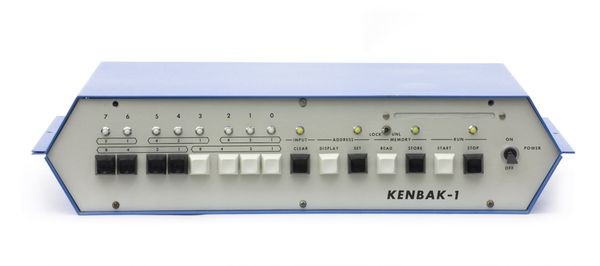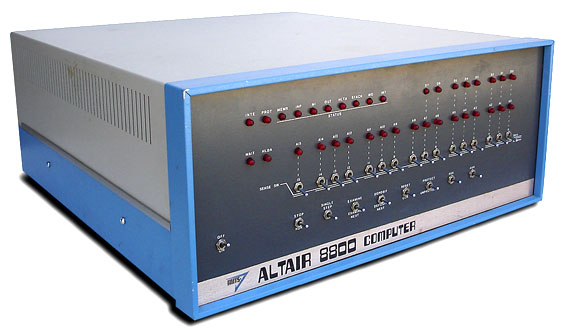When most people think of personal computers, they think of a device with a screen, a keyboard, and a mouse or trackpad. For most of computing history, this has been the case since it is both user-friendly and highly functional. However, before these graphical machines were dominating the market, companies were selling personal computers that were merely just lights and buttons on a box.
The first of these machines was the Kenbak-1, a rather rudimentary machine with a very simplistic, but technical, interface which was made in 1970 with sales starting in 1971 (it sold for $750, making it expensive for non-technical consumers). It was created by John Blankenbaker out of his garage during a time where he was unemployed. Due to his unemployment, he had enough free time to investigate different ways he could make a low-cost machine for personal use. Within a few months, he developed what was to be sold as Kenbak-1. The machine was very simplistic, the only interface was a series of 16 buttons and 12 lights to go along with it. The only thing you could do with it was input programs and run those programs, but even that was challenging. Due to the lack of a sophisticated user interface (to save costs) the user had to input machine language instructions using binary—one of the most low-level ways to program a computer. Unfortunately, the product didn’t catch on with non-professionals so only 40 units were sold (mainly to schools).
 |
| Kenbak-1 |
The first, relatively successful, personal computer was the Altair 8800, introduced to the market in 1975. Just like the Kenbak-1, it was just a metal box with switches (instead of buttons) and lights. Unlike the Kenbak-1, it sold for $395 as a DIY kit and later assembled for $650 as well. The secret to the low price was, according to the owner and president of MITS (the makers of the Altair), that they bought so many Intel 8080 CPUs that they were able to get it for $75 each instead of $300 each. However, it has been rumored that they were buying cosmetically blemished or substandard chips. Although this was featured in magazines and brought to a more public level than the Kenbak-1, it still only sold at least 2000 units (exact numbers were never released) since it only appealed to tech enthusiasts and hobbyists. The Altair brand died off the next year when MITS was bought by Pertec who then failed to maintain the line of computers.
 |
| Altair 8800 |
Although neither of these machines took off, they served as a taste for what was to come. Innovation doesn’t always succeed but it often opens up the market and helps create better than better products through trial and error. This is evident with the personal computer since it was clear that a more user-friendly interface was required. This led to the creation of the Apple I, the IBM PC, and many others over the next decade to meet that demand as the market expanded.
Sources:
https://www.kenbak-1.net/
https://history-computer.com/ModernComputer/Personal/Kenbak-1.html
https://oldcomputers.net/altair-8800.html
I found your article very interesting, especially with how you mentioned the methods used to cut costs, like buying Intel 8080s in bulk. The Intel 8080 was an 8-bit microprocessor with 6,000 transistors in total. It was the second 8-bit microprocessor produced by Intel, produced form 1974 until 1990. This laid down the basis for future Intel architecture, and what would power the rising personal computer market a decade later.
ReplyDeletehttps://en.wikipedia.org/wiki/List_of_Intel_microprocessors#8080
http://www.cpu-world.com/CPUs/8080/